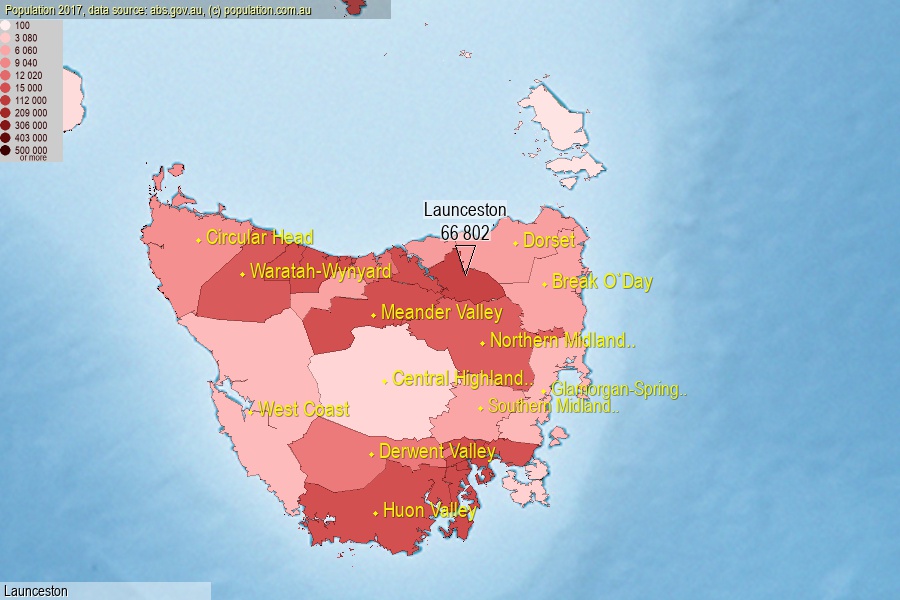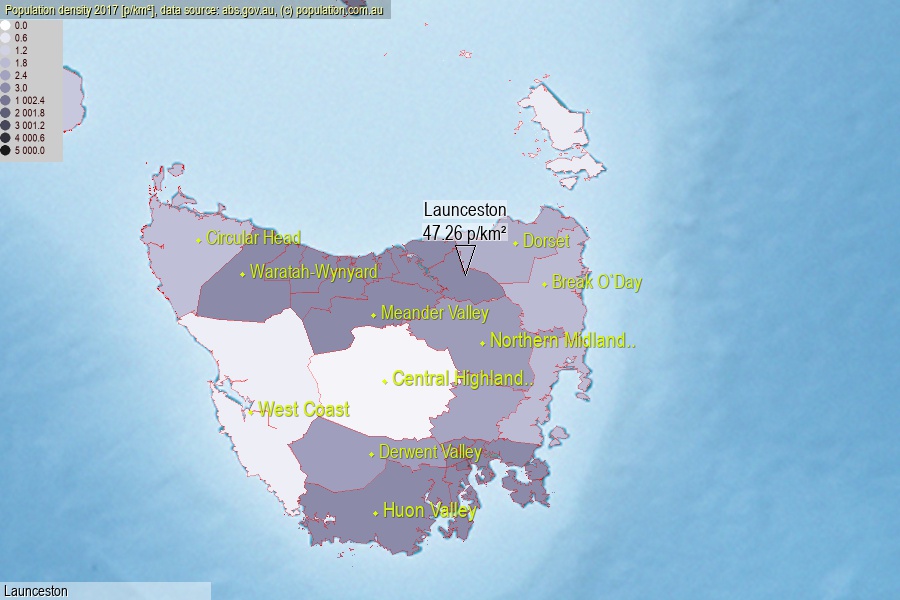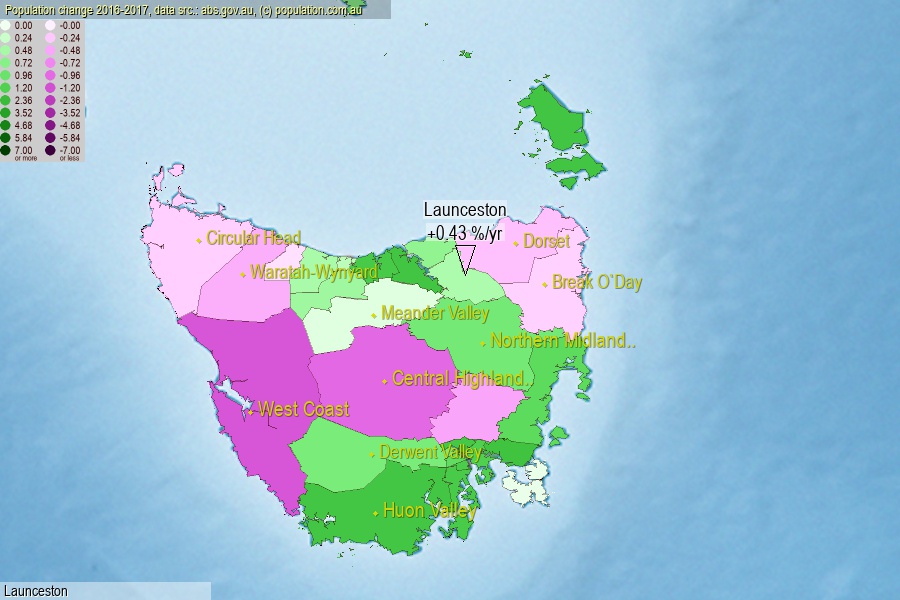 population.com.au
population.com.auLast official estimated population of Launceston City (as Local Government Area) was 66 802 people (on 2017-06-30)[2]. This was 0.27% of total Australian population and 12.684% of TAS population. Area of Launceston is 1 413.60 km², in this year population density was 47.26 p/km² . If population growth rate would be same as in period 2016-2017 (+0.43%/yr), Launceston population in 2025 would be 69 118. [0]



Click to enlarge. Launceston is located in the center of the images.
Population [people], population density [p./km²] and population change [%/year] [2]
[1996-2001] -0.29 %/Y
[2001-2002] +0.23 %/Y
[2002-2003] +0.92 %/Y
[2003-2004] +0.89 %/Y
[2004-2005] +0.70 %/Y
[2005-2006] +0.13 %/Y
[2006-2007] +0.79 %/Y
[2007-2008] +0.96 %/Y
[2008-2009] +0.78 %/Y
[2009-2010] +0.62 %/Y
[2010-2011] +0.43 %/Y
[2011-2012] -0.32 %/Y
[2012-2013] -0.33 %/Y
[2013-2014] -0.22 %/Y
[2014-2015] -0.13 %/Y
[2015-2016] +0.04 %/Y
[2016-2017] +0.43 %/Y
[0] Calculated with linear interpolation from officially estimated population
[1] Read more about LGA and Australian Statistical Geography Standard (ASGS) on abs.gov.au
[2] Population data from Australian Bureau of Statistics (Population and density: 2017; change: 2016-2017)
[3] Digital Boundaries: Australian Statistical Geography Standard (ASGS) 2016.